India is home to some of the most significant Jain pilgrimage sites, each offering a profound spiritual experience. These sacred destinations are steeped in history and hold immense importance for followers of Jainism. From ancient temples nestled in serene landscapes to bustling pilgrimage centers, the "10 Most Important Jain Pilgrimage Sites in India" showcase the rich cultural heritage and deep religious traditions of the Jain community. Each site is a testament to the principles of non-violence, truth, and asceticism, which are the cornerstones of Jain philosophy.
Exploring these revered locations provides not only a spiritual journey but also a chance to witness architectural marvels and historical treasures. Whether you are a devout follower of Jainism or a curious traveler, the journey through these pilgrimage sites will leave you enriched and inspired. Dive into our detailed blog to discover the 10 Most Important Jain Pilgrimage Sites in India and uncover the stories, significance, and spiritual essence of each destination. Let your curiosity lead you to a deeper understanding of Jainism and its sacred landscapes.
10. Ellora Caves, Maharashtra
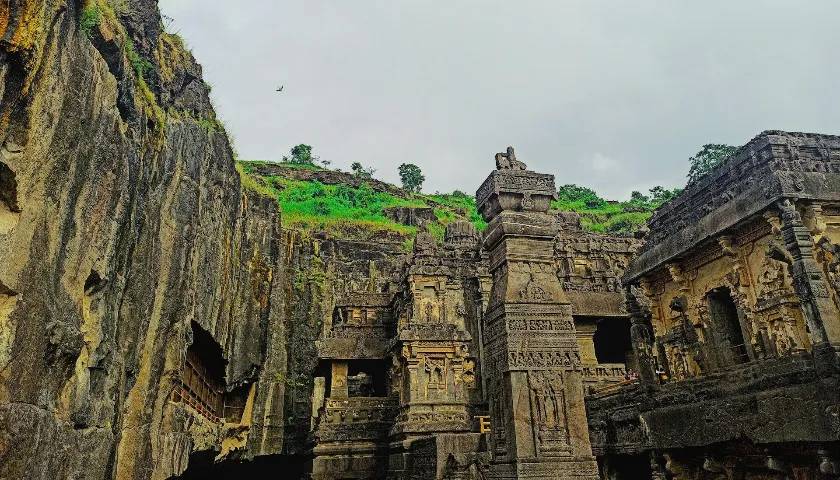
Ellora Caves, located in Maharashtra, are a magnificent complex of rock-cut temples that showcase the architectural brilliance and spiritual heritage of ancient India. Carved between the 6th and 9th centuries, these caves are a testament to the religious harmony that existed in India, as they house Buddhist, Hindu, and Jain temples side by side. The Jain caves, specifically caves 30 to 34, are a significant part of this complex and are dedicated to the Digambara sect of Jainism. These caves were constructed during the Rashtrakuta dynasty and reflect the artistic and cultural zenith of the period.
The Jain caves at Ellora are known for their detailed carvings and intricate sculptures that depict various Tirthankaras, or Jain spiritual leaders, and other religious themes. Cave 30, also known as the Chhota Kailasa, is particularly noteworthy for its architectural style, which resembles the Kailasa temple dedicated to Lord Shiva. The Ellora Caves hold immense importance in Jainism not only because of their artistic and historical value but also as a symbol of the religious tolerance and cultural synthesis that has been a hallmark of Indian civilization. Visiting Ellora provides a profound insight into the spiritual and artistic traditions that have shaped Jain heritage.
9. Shravanabelagola, Karnatala
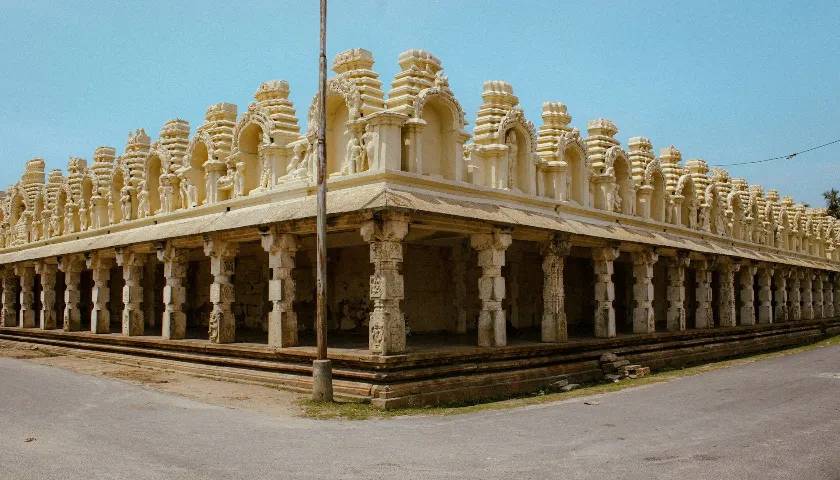
Shravanabelagola, located in Karnataka, is one of the most revered Jain pilgrimage sites in India. This ancient town is renowned for its towering statue of Lord Bahubali (also known as Gommateshwara), which stands at an impressive height of 57 feet on the Vindhyagiri Hill. Erected in 983 A.D. by Chavundaraya, a minister of the Ganga dynasty, this monolithic statue is the world's largest free-standing statue and an architectural marvel. The serene expression on Bahubali's face, combined with the meticulous detailing of the statue, embodies the principles of Jainism, such as non-violence, renunciation, and spiritual tranquility.
Shravanabelagola's significance in Jainism extends beyond the statue of Bahubali. The site is home to several important Jain temples and monuments, including the Chandragupta Basadi and the Odegal Basadi. The Mahamastakabhisheka, a grand festival held every 12 years, attracts thousands of devotees who gather to anoint the statue with milk, saffron, and other sacred substances. This ritual highlights the profound spiritual importance of Shravanabelagola in the Jain community. The town's historical, religious, and cultural heritage makes it a vital pilgrimage destination for Jains from around the world, symbolizing their enduring faith and devotion.
8. Udayagiri Caves, Madhya Pradesh
Udayagiri Caves, located in Madhya Pradesh, are an important historical and religious site for Jainism. These caves, carved out of a sandstone hill, date back to the early 5th century during the reign of the Gupta dynasty. Among the twenty caves, five are specifically dedicated to Jainism, showcasing the rich cultural and religious heritage of the region. The most prominent of these is Cave 20, which houses an impressive image of Parshvanatha, the 23rd Tirthankara, flanked by two yakshas (attendant deities). These caves are a testament to the architectural and artistic prowess of the period, featuring intricate carvings and sculptures that depict various Tirthankaras and Jain deities.
The Udayagiri Caves are significant for their historical and spiritual importance in Jainism. They serve as a remarkable example of early rock-cut architecture and provide valuable insights into the religious practices and iconography of ancient Jain communities. The caves' detailed reliefs and sculptures illustrate various episodes from Jain mythology, highlighting the faith's emphasis on non-violence, asceticism, and spiritual liberation. As a pilgrimage site, Udayagiri continues to attract Jain devotees and history enthusiasts alike, offering a profound connection to the ancient roots of Jainism and its enduring legacy in India.
7. Dilwara Temples, Rajasthan
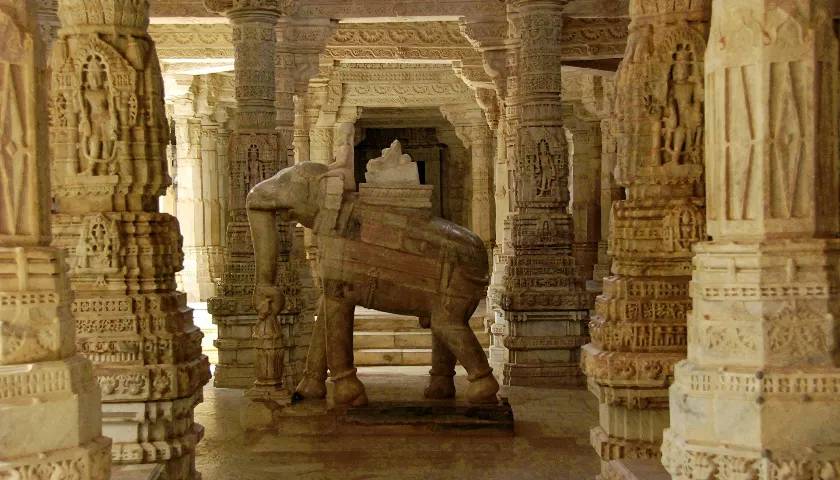
The Dilwara Temples, located near Mount Abu in Rajasthan, are renowned for their stunning architectural beauty and intricate marble carvings. Constructed between the 11th and 13th centuries by the Chalukya dynasty, these temples are a significant pilgrimage site for Jains and are considered among the finest examples of Jain temple architecture in India. There are five temples in the complex, each dedicated to a different Tirthankara, with the Vimal Vasahi and Luna Vasahi temples being the most prominent. The temples are renowned for their opulent use of white marble, with every inch of the structure covered in detailed carvings that depict scenes from Jain mythology and daily life.
The Dilwara Temples are not only an architectural marvel but also hold deep spiritual significance for Jains. The meticulous craftsmanship is evident in the intricately carved ceilings, doorways, pillars, and panels, which showcase the extraordinary skill of the artisans. The Vimal Vasahi Temple, dedicated to the first Tirthankara, Adinatha, was built in 1031 A.D. by Vimal Shah, a minister of the Solanki dynasty. The Luna Vasahi Temple, dedicated to the 22nd Tirthankara, Neminatha, was constructed in 1230 A.D. by two brothers, Vastupal and Tejpal, who were ministers in the Vaghela dynasty. These temples exemplify the Jain principles of non-violence and asceticism, with their serene and meditative environment offering a place of spiritual retreat and devotion. The Dilwara Temples' unparalleled beauty and historical importance make them a vital destination for Jain pilgrims and art lovers alike.
6. Ranakpur Temples, Rajasthan

The Ranakpur Temples, nestled in the Aravalli Range of Rajasthan, are one of the most significant and breathtaking Jain pilgrimage sites in India. Built in the 15th century during the reign of Rana Kumbha, these temples are renowned for their exquisite marble architecture and intricate carvings. The main temple, dedicated to Adinatha, the first Tirthankara, is a remarkable structure with 1,444 intricately carved pillars, each unique in design. The temple complex also includes smaller temples dedicated to Parshvanatha, Neminatha, and Surya (the Sun God), highlighting the rich tapestry of Jain worship and artistry.
The Ranakpur Temples are celebrated not only for their architectural splendor but also for their spiritual significance in Jainism. The temples' design incorporates elements of symmetry and geometry, creating a serene and harmonious atmosphere conducive to meditation and worship. The intricate carvings depict various deities, celestial beings, and scenes from Jain mythology, illustrating the profound devotion and artistic excellence of the artisans. The vast halls, domed ceilings, and beautifully adorned columns reflect the principles of Jain cosmology and philosophy, emphasizing purity, peace, and spiritual liberation. Ranakpur Temples are a testament to the enduring legacy of Jain architecture and spirituality, attracting devotees and tourists alike who seek to experience the tranquil beauty and religious significance of this magnificent site.
5. Pawapuri, Bihar
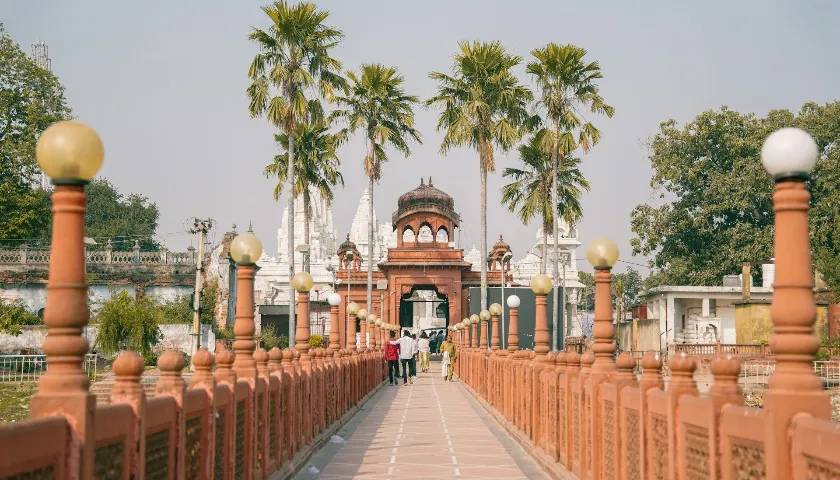
Pawapuri, located in Bihar, is one of the most sacred pilgrimage sites in Jainism, as it is the place where Lord Mahavira, the 24th and last Tirthankara, attained nirvana (liberation) in 527 BCE. This historic event marks Pawapuri as a significant spiritual destination for Jains around the world. The town is home to the Jal Mandir (Water Temple), a stunning white marble temple situated in the middle of a lotus-filled pond. Built in the memory of Lord Mahavira, the Jal Mandir is an architectural marvel, featuring intricate marble work and a serene, reflective atmosphere that draws pilgrims and visitors alike.
The significance of Pawapuri in Jainism extends beyond its historical connection to Lord Mahavira. The site symbolizes the ultimate spiritual goal of liberation from the cycle of birth and rebirth, which is a central tenet of Jain philosophy. Besides the Jal Mandir, Pawapuri also houses the Samosharan Temple, which commemorates the place where Lord Mahavira delivered his final sermons. The peaceful ambiance and the spiritual aura of Pawapuri make it a revered destination, offering devotees a place for reflection, prayer, and connection to the teachings of Jainism. Pawapuri's deep spiritual heritage and its beautiful temples make it an essential stop for anyone seeking to understand the profound religious and cultural traditions of Jainism.
4. Deogarh, Rajasthan
Deogarh, located in Uttar Pradesh, is an important pilgrimage site for Jains, known for its ancient temples and rich historical significance. The town is particularly renowned for the Deogarh Jain Temples, which date back to the early medieval period, around the 8th to 9th centuries. These temples are situated on the banks of the Betwa River and form part of the larger Deogarh fort complex. The most notable temple, the Shantinatha Temple, is dedicated to the 16th Tirthankara, Shantinatha. It stands out for its exquisite carvings and sculptures that depict various Tirthankaras and Jain deities, offering a glimpse into the artistic and devotional practices of ancient Jain communities.
Deogarh holds a special place in Jainism due to its historical and religious heritage. The site is home to numerous rock-cut sculptures and inscriptions that provide valuable insights into the early development of Jain art and architecture. The temples are adorned with detailed iconography, including scenes from Jain mythology and depictions of Tirthankaras in meditative poses, which emphasize the Jain principles of non-violence, asceticism, and spiritual purity. For Jain pilgrims, Deogarh is not only a place of worship but also a destination that connects them to their religious history and the timeless teachings of Jainism. The serene environment and the historical significance of Deogarh make it a must-visit site for those exploring the spiritual and cultural landscapes of Jainism in India.
3. Girnar, Gujarat
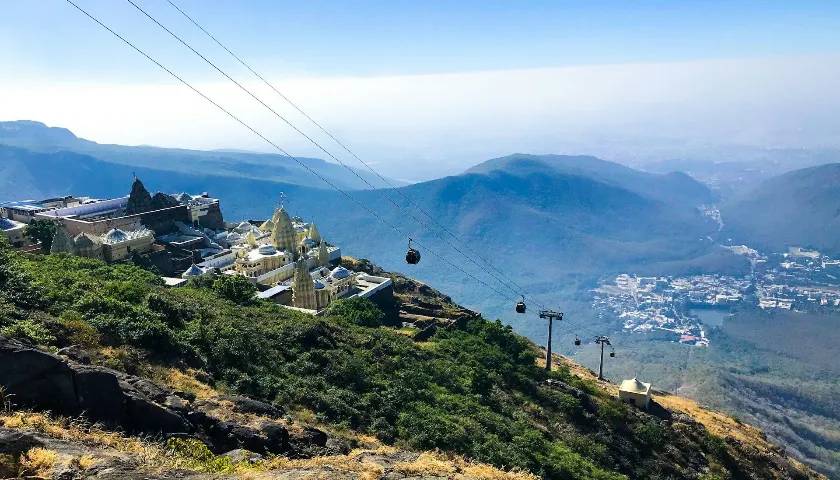
Girnar, located in the Junagadh district of Gujarat, is one of the most venerated pilgrimage sites in Jainism. This ancient hill, rising to a height of about 1,100 meters, is dotted with numerous temples that attract thousands of pilgrims each year. The Girnar Temples, particularly the ones dedicated to Neminatha, the 22nd Tirthankara, are renowned for their historical and spiritual significance. The Neminatha Temple, believed to be constructed around the 12th century, stands as a testament to the architectural and devotional fervor of the Jain community. The ascent to these temples involves climbing 9,999 steps, making the pilgrimage a physically demanding yet spiritually enriching journey.
Girnar's importance in Jainism is underscored by its association with several key events in Jain mythology. It is believed that Lord Neminatha attained nirvana on this very hill, enhancing its spiritual significance. The temples here are adorned with intricate carvings and sculptures, depicting various Tirthankaras and scenes from Jain scriptures. These artistic works reflect the rich cultural heritage and the profound religious traditions of Jainism. Girnar's serene and majestic environment, combined with its deep historical roots, makes it a pivotal site for Jain pilgrims. The challenging yet rewarding pilgrimage to Girnar embodies the essence of Jain spiritual practice, emphasizing endurance, devotion, and the quest for enlightenment.
2. Shatrunjaya Hill, Gujarat
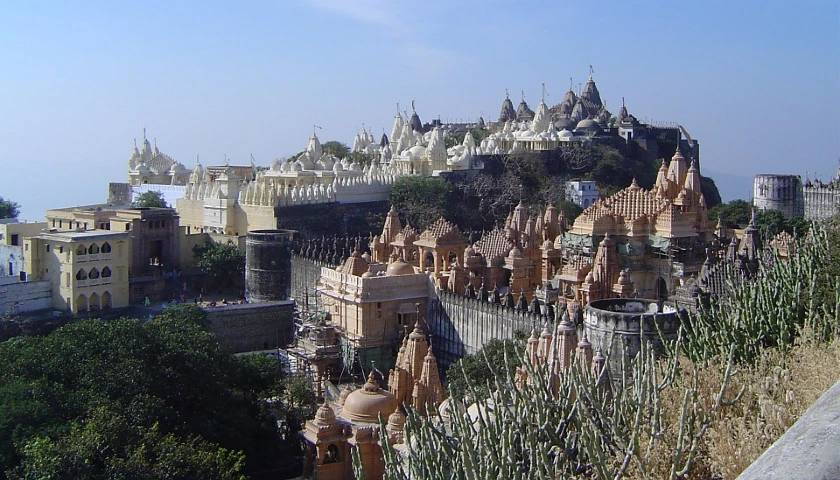
Shatrunjaya Hill, located near the town of Palitana in Gujarat, is one of the most sacred pilgrimage sites in Jainism. This hill is renowned for its stunning temple complex, which includes around 900 intricately carved temples spread over its two summits. The temples, predominantly dedicated to various Tirthankaras, are a testament to the religious devotion and architectural brilliance of the Jain community. The main temple, dedicated to the first Tirthankara, Adinatha, is particularly significant and is considered one of the holiest places in Jainism. The pilgrimage to Shatrunjaya Hill involves a climb of approximately 3,800 steps, symbolizing a spiritual journey towards enlightenment.
The history of Shatrunjaya Hill dates back to ancient times, with the earliest temples believed to have been built around the 11th century. These temples have been meticulously maintained and renovated over the centuries, reflecting the unwavering faith and dedication of Jain devotees. The hill is not only a place of worship but also a center of learning and meditation, offering a serene environment for spiritual reflection. The elaborate marble carvings, detailed sculptures, and serene ambiance of the temples make Shatrunjaya Hill a profound embodiment of Jain art, culture, and spirituality. For Jains, a pilgrimage to Shatrunjaya Hill is a once-in-a-lifetime experience that embodies the principles of non-violence, asceticism, and the pursuit of spiritual purity.
1. Sammed Shikharji, Jharkhand
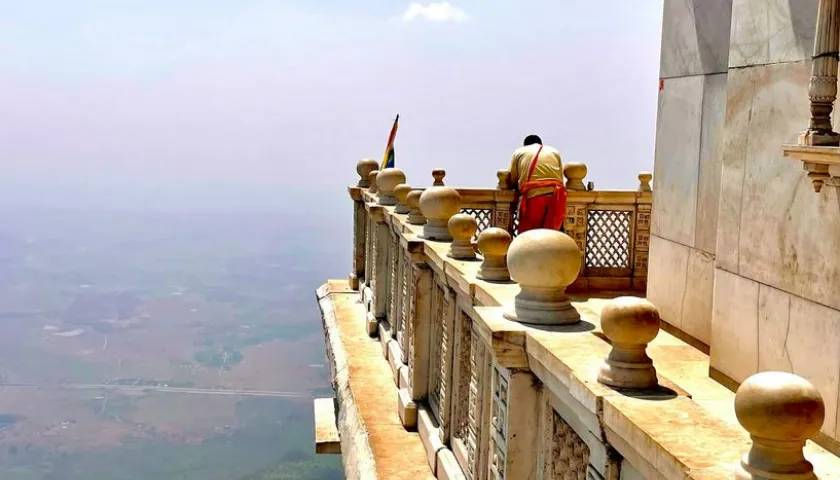
Sammed Shikharji, located in the Giridih district of Jharkhand, is the most revered Jain pilgrimage site in India. Also known as Parasnath Hill, it holds a preeminent place in Jainism as the site where 20 of the 24 Tirthankaras are believed to have attained nirvana (liberation). This sacred hill is the highest peak in the state of Jharkhand and is adorned with a series of temples dedicated to these Tirthankaras. The pilgrimage involves a trek of approximately 27 kilometers to reach the top of the hill, where pilgrims can visit the temples and partake in spiritual practices amidst the serene and spiritually charged atmosphere.
The historical and spiritual significance of Sammed Shikharji is immense in Jainism. It is believed that the hill was named after the sage Shikharji, who meditated here and achieved enlightenment. The site is revered not only for its religious importance but also for its architectural marvels. The temples on Sammed Shikharji are renowned for their intricate carvings and sculptures that depict various Tirthankaras and scenes from Jain scriptures. The pilgrimage to Sammed Shikharji is considered a deeply transformative experience, symbolizing the ultimate journey towards spiritual liberation. The hill’s profound connection to Jain teachings and its role as a center of pilgrimage make it the foremost destination for Jains seeking to connect with their faith and achieve spiritual fulfillment.
Exploring the rich tapestry of Jain pilgrimage sites across India offers a profound journey into the heart of Jainism's spiritual, historical, and cultural heritage. From the ancient rock-cut temples of Ellora to the majestic heights of Sammed Shikharji, each site holds unique stories of devotion, enlightenment, and architectural brilliance. These sacred places not only reflect the enduring faith and practices of the Jain community but also provide a serene and reflective environment for spiritual growth and understanding.
If you feel inspired to embark on your own spiritual journey to these remarkable sites, we invite you to contact us. At Alkof Holidays, we specialize in crafting personalized Jain Pilgrimage Tours tailored to your interests and needs. Whether you wish to visit a specific site or explore multiple destinations, our expert team is here to help you plan an enriching and memorable pilgrimage. Let us guide you on a path of spiritual discovery and enlightenment.









